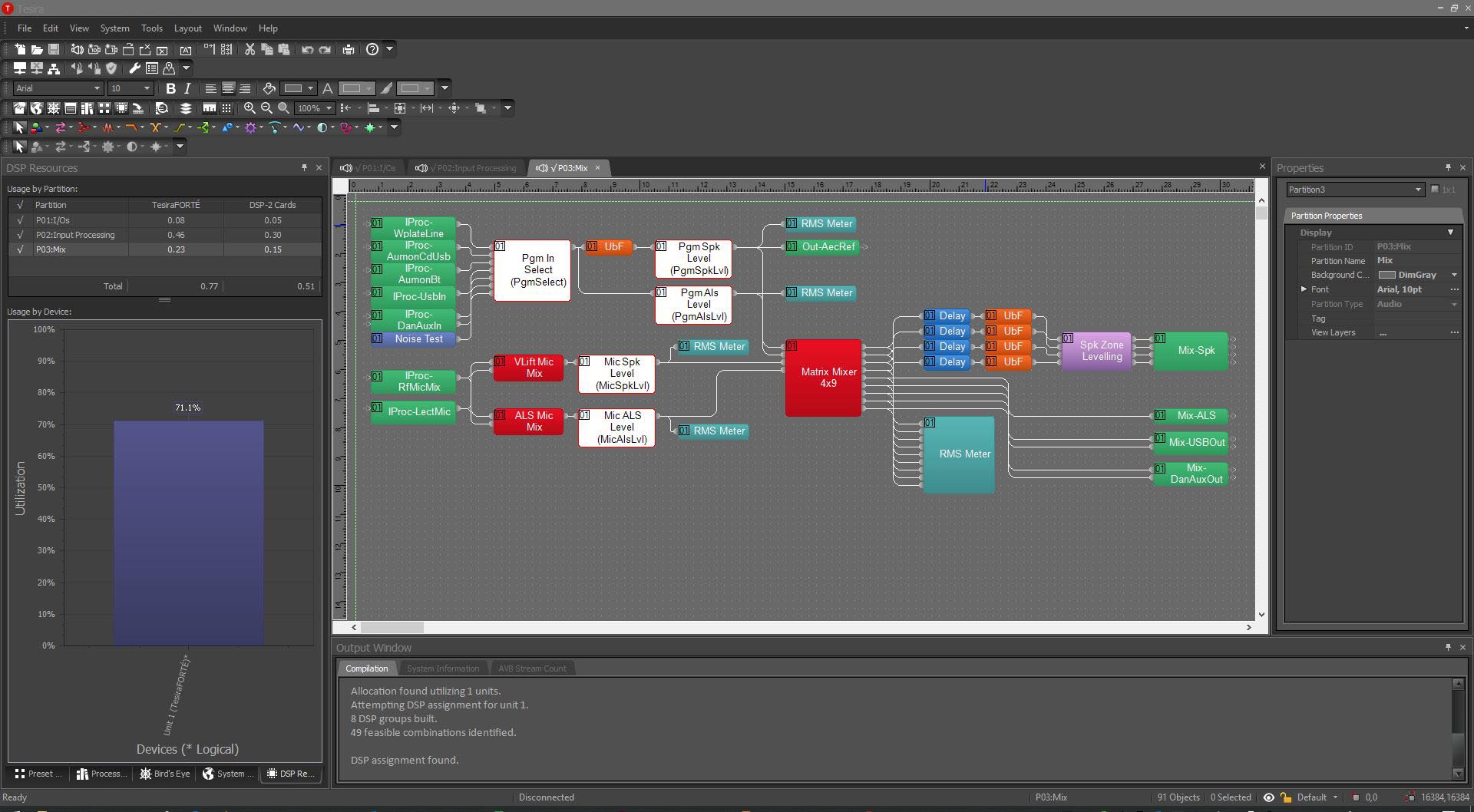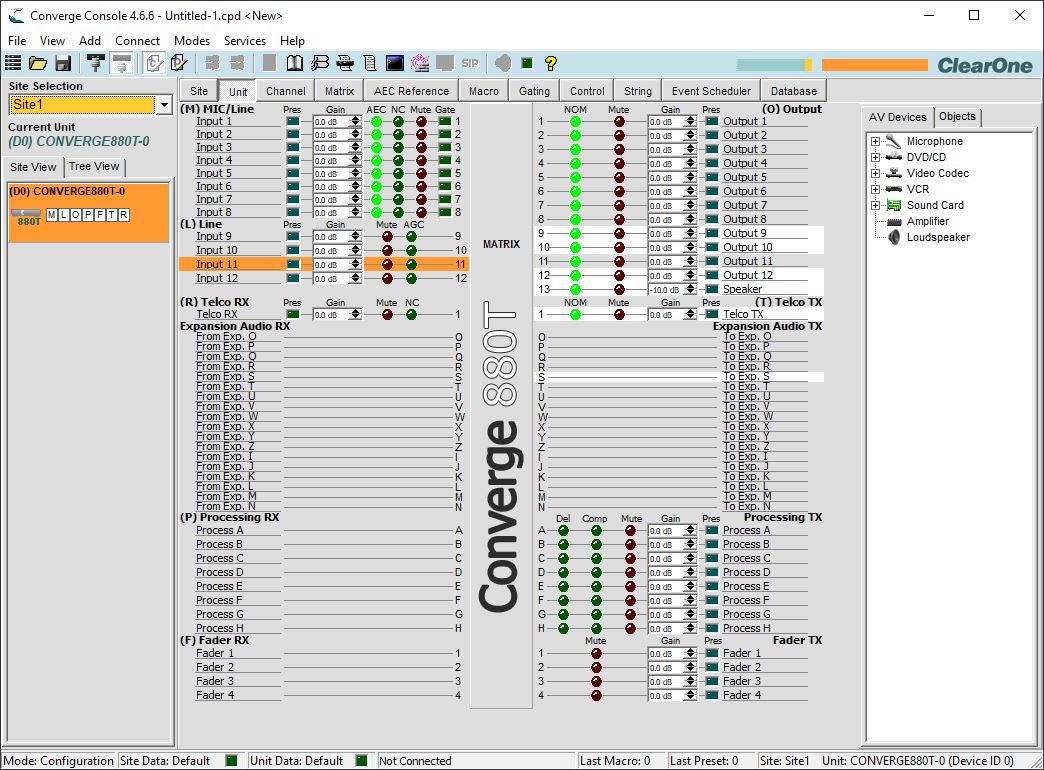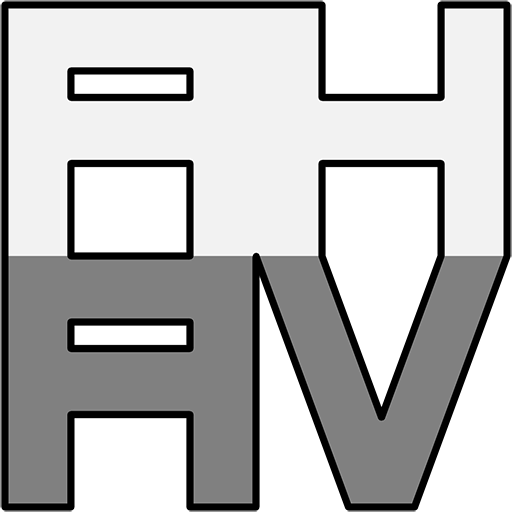One of the ways of categorising an audio Digital Signal Processor (DSP) is the architecture that’s used when configuring it. There are two main types:
Open architecture
Open architecture is where you are basically given (or you define) the inputs/outputs on a system and are given free reign to fill in the middle however you want. You usually drag in and link together individual processing elements such as EQ, compressors, mixers, volume controls, etc. The number of these elements is limited in some way, usually by the processing power available (which can sometimes be upgraded, like in the Biamp Tesira servers).
This architecture allows for some modularity. Sometimes the hardware can be flexible, with inputs/outputs being configurable (e.g. card-based systems). Processing elements can be grouped together and effectively saved as modules.
The freedom this architecture gives you is a double-edged sword; it makes it easier to set things up the way you want, but also makes it easier to stuff things up. You have to think a bit more when it comes to structuring things so it can be harder to get started.
Examples of brands/products that use the open architecture are:
- Biamp (example from Tesira below)
- QSC Q-SYS
- Bose ControlSpace
- Symetrix
- BSS Soundweb London
- Peavey Media Matrix

Closed architecture
Closed architecture is where the signal processing layout is defined for you; you basically route your signal through the fixed sections and adjust the setting on each element. There will usually be some form of processing on the inputs and outputs, a matrix switcher/mixer in the middle, and some sub-mixes that have their own processing as well. With the processing elements being predetermined, there is no need to track processor usage; what you see is what you can get.
The devices themselves usually have a fixed set of inputs/outs (maybe with a card slot for VoIP/telephone). They often can be linked together in some fashion.
There is some level of freedom here, but it’s based around where you send the signal between sections. You usually can’t change the structure of the processing within these sections (e.g. in a ClearOne Converge input block: you can’t apply dynamics processing before the EQ if you needed to for some reason).
The limitations of closed architecture make it easier to get started with; it’s generally easier to understand and harder to stuff up. There is a tipping point though where if the system gets too complicated it becomes hard to track where the signal goes and what’s happening to it (bouncing through multiple processing and sub-mixes to satisfy some design quirk can get a bit annoying).
Examples of brands/products that use the open architecture are:
- ClearOne Converge (example below)
- Crestron Avia
- Extron
- Polycom/Poly SoundStructure (this one has some aspects of being open, but is closed architecture in my opinion )

Which one to use?
For a lot of the time it is down to personal preference; most jobs I’ve come across can be tackled either way. That said, it is a good idea to at least be familiar with both architectures. You may not have a choice in the matter, or a particular job may warrant a different solution due to complexity, cost and/or available time. As long as you know at least one version of each architecture the general idea transfers across to other versions.
My general rule of thumb when given the choice is closed for quick, simple, straight-forward jobs, and open for the more complex ones.
If I was learning from scratch, I would choose the closed architecture first. It’s harder to stuff up, and also gives you some ideas on how you can structure things when you move across to open architecture.
